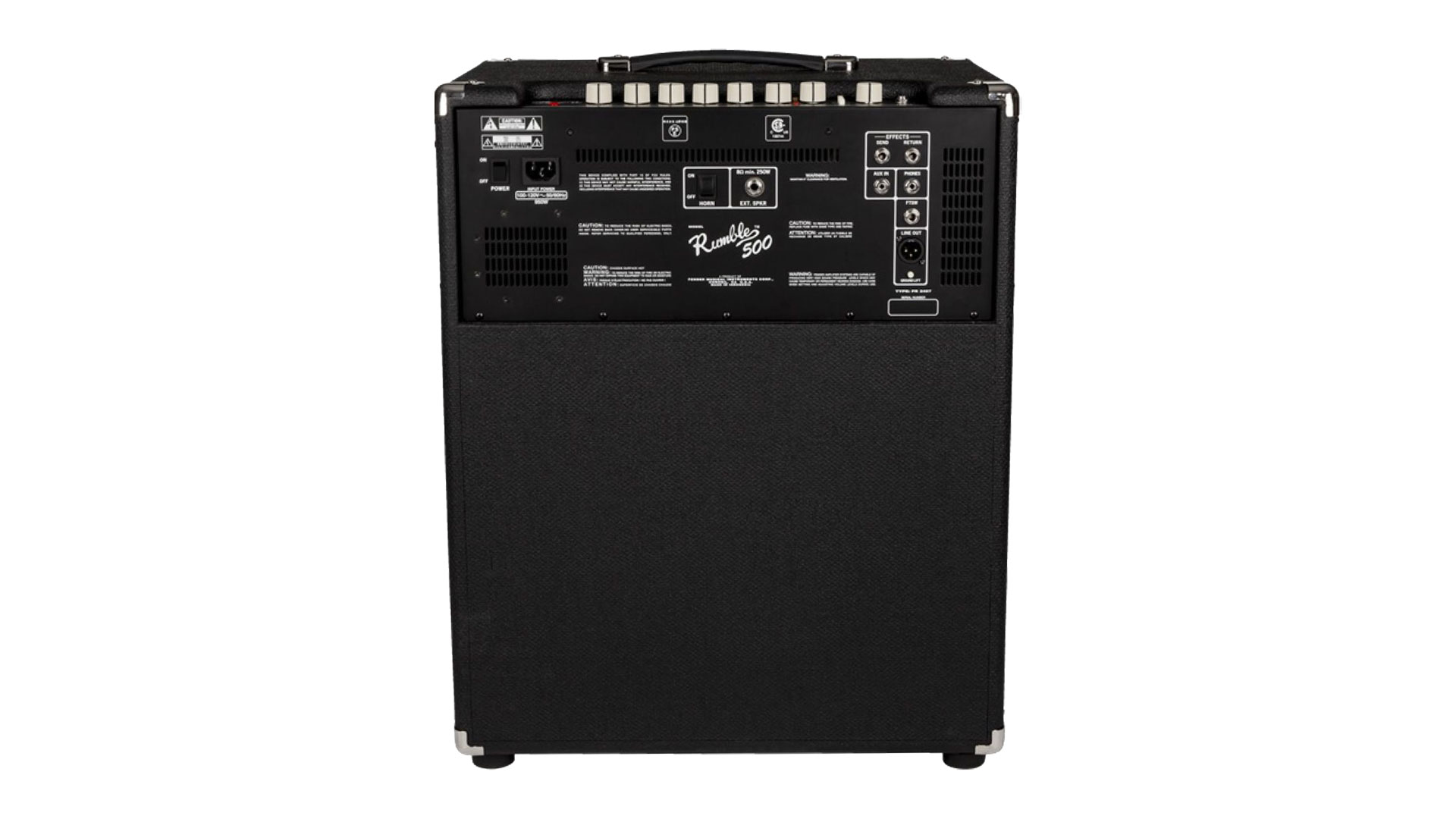Bass rig options have exploded in the past two decades. Traditional rigs are well-known to all bassists across all playing environments, and boutique manufacturers are constantly pushing the limits on what can be implemented in rigs. At the same time, bassists are now turning to portable PA speakers as well, enticed by the versatility they offer among other things. Below, we’ll go into some of these options and why they may or may not be good for you.
Traditional Rigs
Traditional rigs like the Fender Rumble 500 are designed with bass players in mind. Bass cabinets usually have a slight tone coloration or pleasant “thump” produced by an extended low end and a boosted midrange. Bass amps also have EQ options that are designed to accentuate what most bassists want to hear and prefer. Conversely, some brands strive to minimize tone coloration as much as possible. Various rigs are suited for either electric or upright bass, or both.

The back of the <a href="https://geni.us/ehB4k6" rel="nofollow sponsored">Fender Rumble 500</a>.
Since traditional rigs are designed for bass only, the specialization can create issues with other sound sources. The lack of an upper range in sound reproduction and limited EQ capability translates into a loss of tone when playing upright bass with a bow, or electronic instruments like synthesizers.
Portable PA Speakers
These are the speakers you would normally see as stage monitors or PA mains in smaller venues. Most modern speakers have no coloration and accurately reproduce your tone, although there are exceptions like the Mackie Thump 12A. This lack of coloration and fuller range of frequency response makes them more versatile: use it as a bass amp one day, a monitor the next, and as a small PA system with a mixer the following week.

The <a href="https://geni.us/RCTW" rel="nofollow sponsored">Mackie Thump12A</a> is a solid PA speaker for bassists.
The clarity of the tone can also be dull depending on your tastes and will need something added to your signal chain to sweeten it up. Lower quality speakers don’t have an extended lower frequency range (below 40Hz) and risk being blown if you’re wailing on the lower range of the electric bass.
Most PA amp inputs are set to either mic or line input impedance, compared to all bass amps inputs which are set for instrument-level; some now have ways to switch this but the selection is still small, meaning that you must use a preamp DI before the PA amp input to avoid loss of tone and volume.
Combo vs. Amp and Cab
Using a combo or amp and cabinet mix like the Aguilar Tone Hammer 350 amp and SL112 cabinet must also be considered. Combos have the amplifier hardwired to the cabinet in a single enclosure, meaning they can’t be separated without taking apart the rig and removing wiring or more. This type of setup is great for those who aren’t concerned with extensive customization and want the rig as simple and streamlined as possible.

The <a href="https://geni.us/voVqc" rel="nofollow sponsored">Aguilar Tone Hammer 350 amp</a> and <a href="https://geni.us/iDk5I" rel="nofollow sponsored">SL112 cabinet</a>.
If one of the two components fails however you’ll need to have someone repair the whole unit for you if you don’t have experience with repairing amps yourself. Using separate components greatly expands on the range of tone achievable but will cost more to get there, either through more expensive amps and/or cabs or through the extra components like speaker cables, preamps, and DIs.
Conclusion
As mentioned about, the sky’s the limit on the number of ways you can customize your sound nowadays. Whether you only play electric bass, want to double on keys or upright, or need to support a band with your rig there’s something out there to fit your exact need.